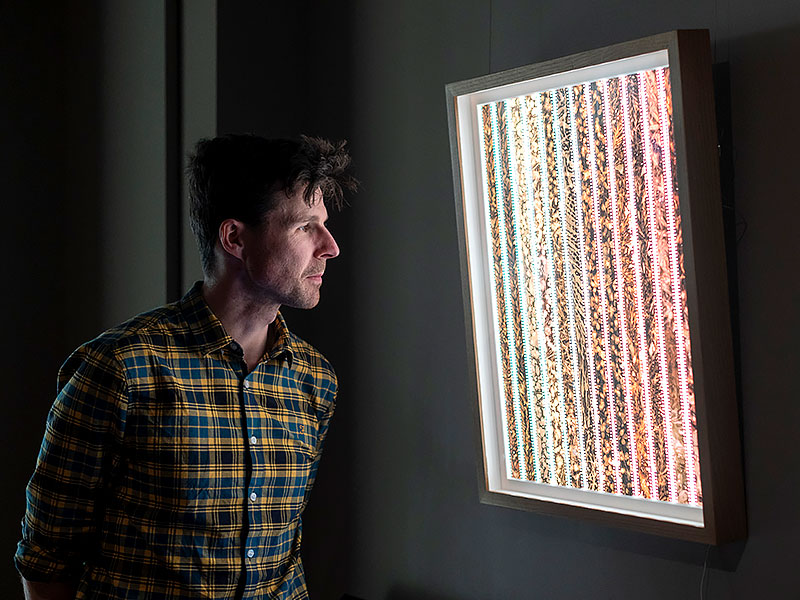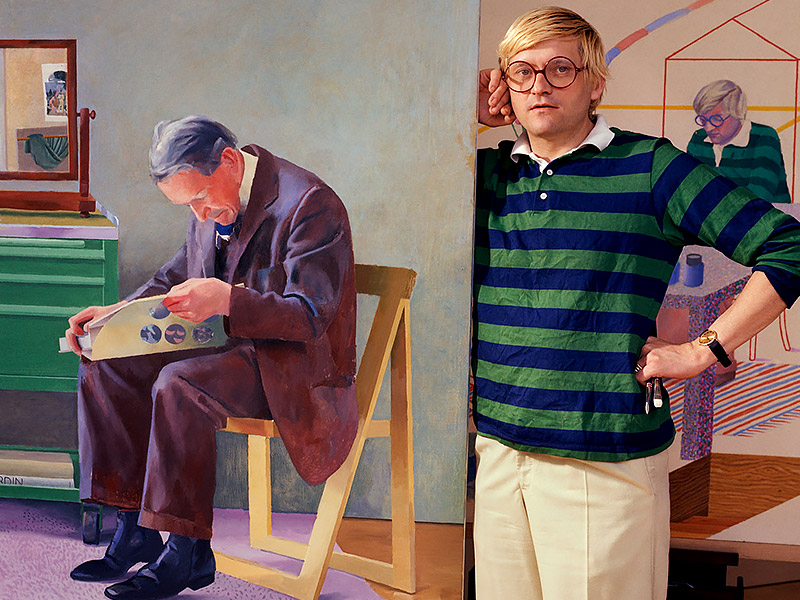Ushering in a new era for photography at the Bodleian
With the study of photography increasing in prominence, a new curatorial post has been established to care for and develop the Bodleian Libraries’ unique photography collections.
‘There are photographs everywhere,’ says Dr Phillip Roberts, the Bern and Ronny Schwartz Curator of Photography at the Bodleian Libraries. ‘We have tonnes of archives and many of them contain photographs; over the years they have seeped in without anyone really noticing. And because we’re a legal deposit library, we’ve accidentally acquired one of the best collections of photobooks in the entire world too.’
Although the Bodleian is home to a wealth of photographic material, it has been intentionally collecting the medium for only a short time. The libraries’ first major purchase in this vein was the archive of photography pioneer William Henry Fox Talbot in 2014. Later acquisitions, including the archives of photographers Daniel Meadows and Helen Muspratt, the Llewelyn and Gaisford collections of early photographs, and Charles Chadwyck Healey’s gift of 6,000 photobooks, have helped to cement the Bodleian as a key guardian of photographic heritage.
It was, however, a £2 million gift from The Bern Schwartz Family Foundation, donated alongside the archive of American portrait photographer Bern Schwartz in 2021, that really set the libraries on a new footing. The funding enabled the Bodleian to appoint a curator of photography for the first time in its history – someone whose sole focus would be to build the collection, make it accessible to students and researchers, and share it with the public through exhibitions, events and research collaborations.
 Dr Phillip Roberts in the Weston Library. Photo by John Cairns
Dr Phillip Roberts in the Weston Library. Photo by John Cairns
When Phillip took up the post in spring 2022 there were already two photography exhibitions lined up: A New Power: Photography in Britain 1800–1850 and Bright Sparks: Photography and the Talbot Archive. With both due to open in early 2023, he saw an opportunity to make a bold statement about the Bodleian’s long-term commitment to photography, as well as to celebrate the progress already made towards its conservation. The idea of a photography season was born.
Running throughout 2023, the season has incorporated both pre-planned exhibitions and a varied programme of events, including a scholarly symposium, public talks and hands-on workshops. Phillip even found the time to curate an additional display called Natural Magic: Experiments in Photography, which invited contemporary photographers to revive the processes of the past and create new works of art.
Through all of his efforts Phillip is steadily building interest in the libraries’ photographic offering, both among the visiting public and those with Bodleian reader cards. ‘I’m getting many emails from people saying they would like to see the Talbot archive, people who didn’t realise that it had such interesting things in it,’ he says. Enquiries from researchers have also increased after one of Mary Somerville’s notebooks – held by the Bodleian for many years but only recently found to record the scientists’ experiments with natural plant photography – went on display.
‘There’s something really beautiful about having a collection where every single item can be seen and used. If it’s stable enough to survive being looked at, I’ll let someone look at it’
As well as facilitating access to the libraries’ archives, Phillip has been working over the past 18 months to give the Bodleian a clear identity and direction for its photographic collecting. ‘We’re not a museum or gallery, we don’t have a permanent photograph gallery where I can show these things,’ he explains. ‘What we do is collect items to put them in front of our readers so they can learn new things – and that might be to write a book or a dissertation, or it might be learning how to do the process themselves, to become a photochemist or an artist. We’re about facilitating active creation and learning; that’s what the archives are for, that’s our remit and that’s what distinguishes us from others.’
Phillip is currently working on the acquisition of several major archives, as well as smaller collections and single items. As might be expected, the focus will be on things that can be learned from or that will connect well with the libraries’ existing holdings. One such acquisition concerns the work of Mohamed Amin, an African photojournalist who documented many of the continent’s political crises – it promises to be a key addition, providing a new perspective on the Bodleian’s existing African collections. The libraries will also soon acquire the archive of Paddy Summerfield, Oxford’s greatest photographer and creator of a surreal and deeply moving vision of the city.
In addition to seeking out new items, the libraries are now also receiving many more offers of photographic material. ‘Now when photographers are wondering what to do with their archive, quite often someone will tell them to go to the Bodleian,’ Phillip explains. ‘We can only take a fraction of those that are offered, but I think it’s a sign that we’re doing a good job, that people trust us to manage the history of this medium, and how hungry a lot of people are for a place like the Bodleian to take part in photographic collecting.’
Although the libraries’ photographic reputation was growing before his arrival, Phillip says that the new curatorship has provided a crucial point of contact for those interested in the field. ‘My email address is now flying around the world of photography,’ he notes. It is a benefit that will continue long after his tenure comes to an end. ‘The foundation gave enough money to endow the post and that is key because it allows someone to be here permanently who can commit to photography. That sustained focus is what changes things, and it means we can afford to announce ourselves as a player in the photo-heritage world.’
 David Hockney, gift of The Bern Schwartz Family Foundation, 2021 © National Portrait Gallery, London
David Hockney, gift of The Bern Schwartz Family Foundation, 2021 © National Portrait Gallery, London
As well as enabling the endowment of the curatorship, the foundation’s decision to also gift the archive of Bern Schwartz has been a major boon for the Bodleian. The archive is rich in original prints, contact sheets and negatives, as well as documentary material that brings life to the compelling work that Bern, alongside his wife Ronny, undertook in the 1970s. ‘Portraiture is about relationships with people,’ says Phillip, ‘and so to have Bern’s relationships with his sitters spelled out in the archive is really important.’
Being able to use photographic archives to better understand and inspire people is one the joys of Phillip’s role at the Bodleian. ‘Photography is about life, it’s just a way of recording all of the things that people have experienced and that’s really what I want to pull out of these archives, because that’s the material that draws people in,’ he says. ‘I want an undergraduate to see their dissertation topic on the wall of one of our exhibitions and think: that’s what I’m going to do, that there – and it could change their whole world.’
Help to safeguard the work of the Bodleian Libraries